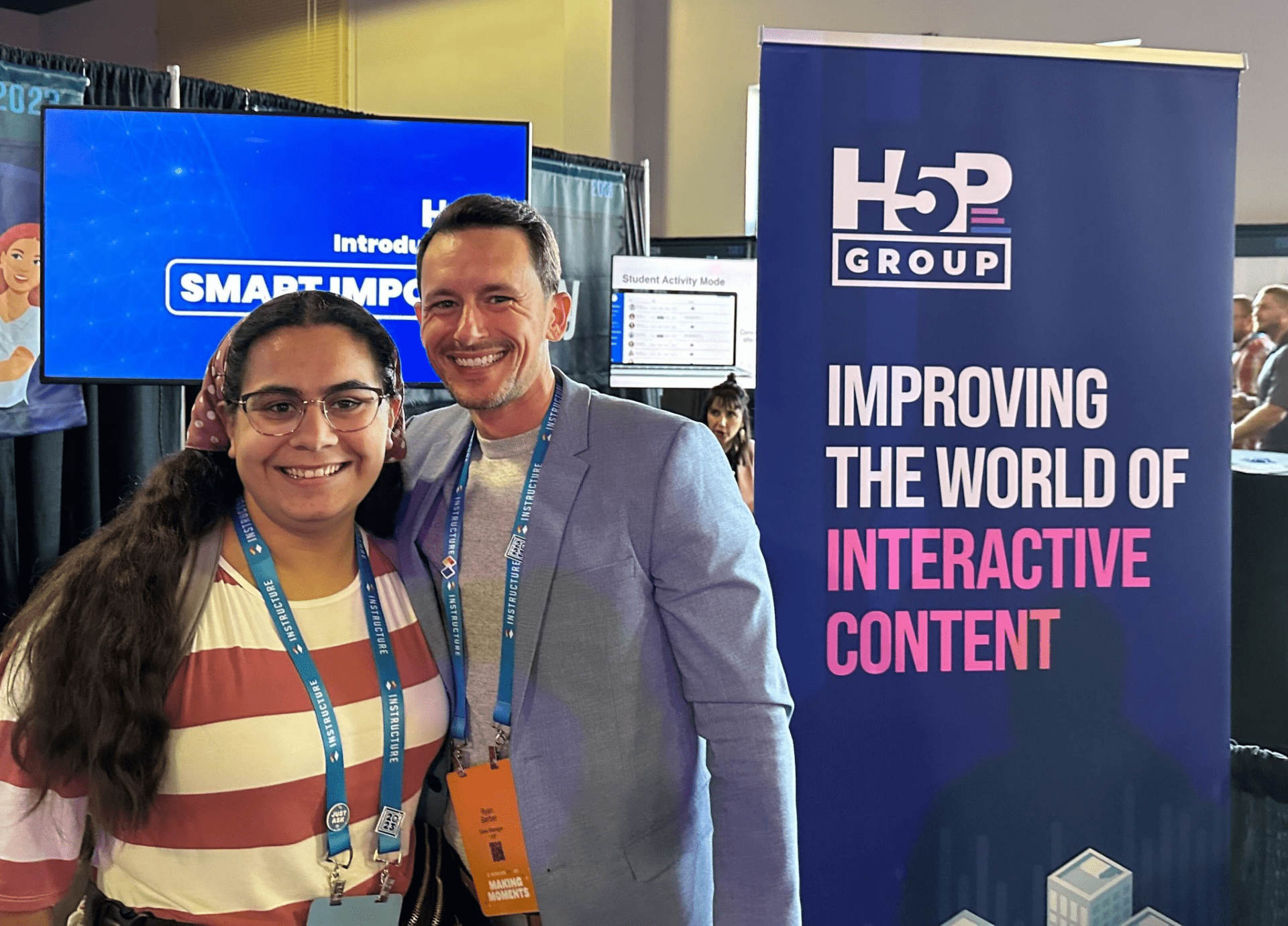In the digital age, instructional design requires an understanding of technology and how it can be used to streamline and facilitate learning. Today’s students often prefer to engage with interactive online tools where they can learn at their own pace and according to their own schedules. At Texas State University, library leaders realized that they needed to develop an interactive option for teaching that would help them more efficiently deliver library research instruction using modern interactive tools that students would use.
Enter Henna Punjabi, University Libraries’ first instructional designer charged with creating teaching tools using technology solutions to meet the information and research literacy needs of the university. Punjabi, who uses they/them/their pronouns had been a student employee in the Alkek Library and their supervisors knew Punjabi was the perfect person to lead this effort.
“The demand for library instruction has grown so much in recent years that we have to find innovative ways to offer the instruction within staffing limitations,” Punjabi said.
That’s where H5P comes in. H5P is an abbreviation for HTML 5 Package. HyperText Markup Language or HTML is standard for creating web pages and coding online content. H5P allows users to create, share, and reuse interactive content that can be embedded into a wide array of online platforms. Punjabi, a 2022 graduate of Texas State’s digital media innovation program in the School of Journalism and Mass Communications, embraced the new technology and soon became a recognized expert.
Punjabi created interactive online tutorials that can be accessed from the library’s website or embedded into Canvas, the university’s Learning Management System, by faculty for their specific course needs.
“We identified the library research skills and topics that are taught in every library instruction class, like how to do research, what is a database, things like that,” Punjabi said. These are skills that can be taught online. It doesn’t replace in-person instruction, but it creates a primer to lay the foundation for what you will learn from librarian instructors. Our faculty embed this into their Canvas course, then students will complete the guide before the librarian comes to instruct. That way, the librarian can spend more time helping students actually do their research.”
The tutorial guides Punjabi created include interactive tools like clickable links, illustrations, videos, and graphics that help students understand the research process, select a research topic and formulate a research question, find books and articles, and learn how to take notes, use quotes, and cite their sources. All of the content is openly licensed, so anyone, anywhere can use it as an Open Educational Resource (OER).
“It’s really great when we can embrace what technology does for us, so that we can create using that technology and spend more time doing human things, Punjabi said. “We are kind of at the forefront of employing this technology for academic libraries.”
Last spring, H5P put out a call for ambassadors and despite having only worked with the technology for a year, Punjabi applied to be an ambassador and was accepted making them one of the 120 technology advocates across the world. Punjabi’s innovative use and prowess with the technology soon drew the attention of H5P leadership.
“We had a customer event the evening before the start of InstructureCon in Denver in July and Henna was the first person to show up,” said Nils Viken, chief revenue officer for the H5P Group. “Henna displayed a strong understanding of H5P technology, interactive content production, and the value such tools bring to teaching faculty and instructional designers. Henna also has a warm and welcoming personality that can inspire others, and I think will lead well by example.”
As a result of that meeting, Viken asked Punjabi to serve as one of three regional H5P lead ambassadors for the region that includes the U.S., Canada, Mexico and South America.
“It’s a very cool opportunity,” said Punjabi who is the youngest regional leader. “It’s a little intimidating, because the other two lead ambassadors have been working in this sphere for a long time.”
As lead ambassador, Punjabi is elevating recognition of Texas State University and leading the conversations around how the technology can be used in higher education and beyond.
“H5P started as an open-source project 10 years ago and the technology has become a preferred technology for millions of users across the world,” Viken said. “Our ambassadors have been carefully selected after an application process, and the main goal for this program is to cultivate a community of dedicated ambassadors who share their authentic experiences with others.”
Punjabi is energized at the prospect of broadening the use of H5P in instructional design both at Texas State University and beyond. Punjabi is now working with the new TXST Global division to join forces in the use of the technology for course design that will be used for instruction of Texas State students far and wide.
This article was contributed by Debbie Pitts, University Libraries Marketing and Communications Coordinator.
